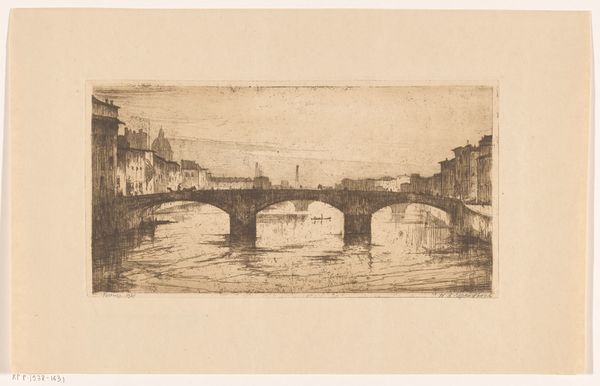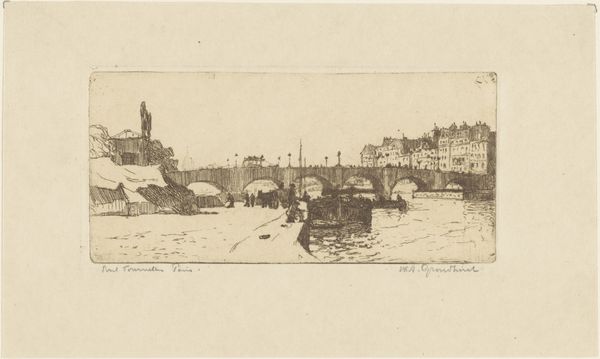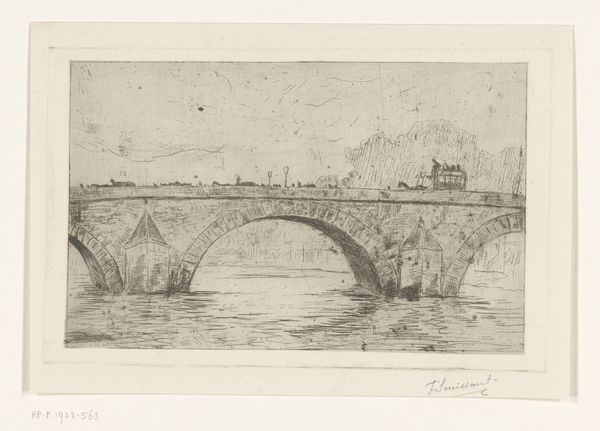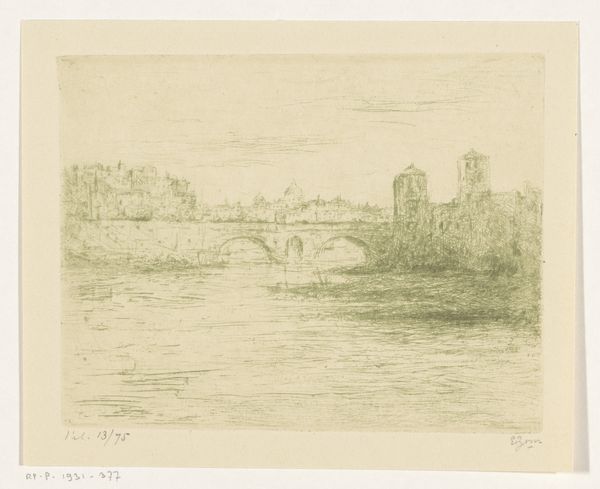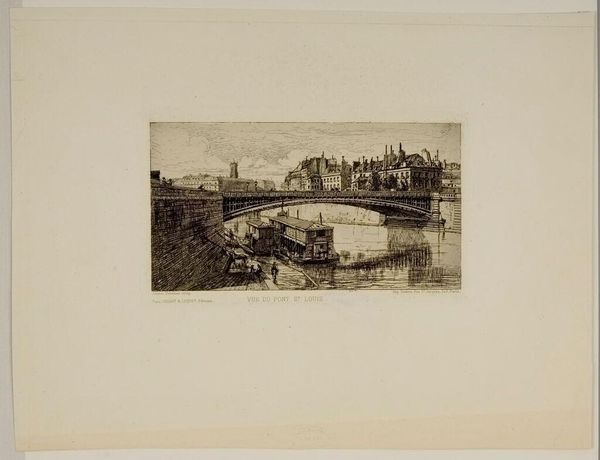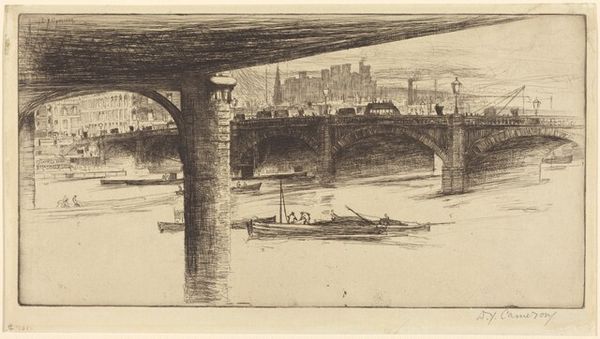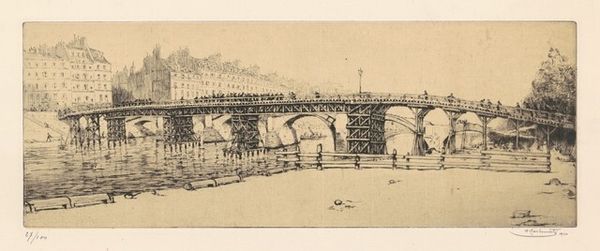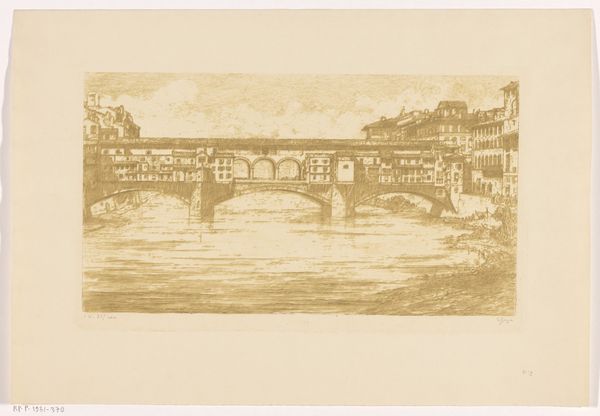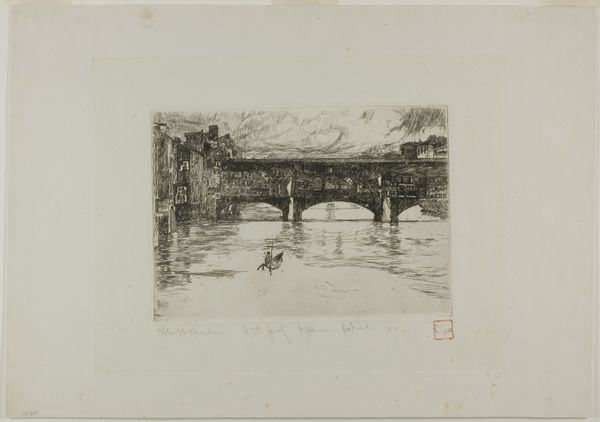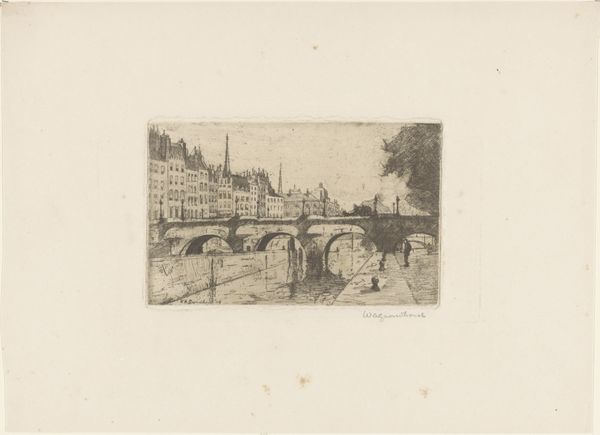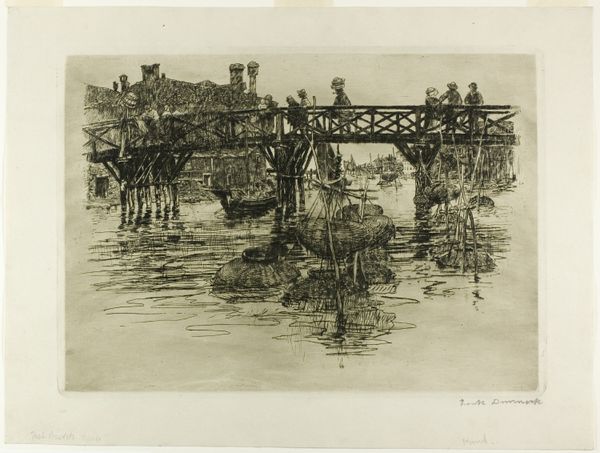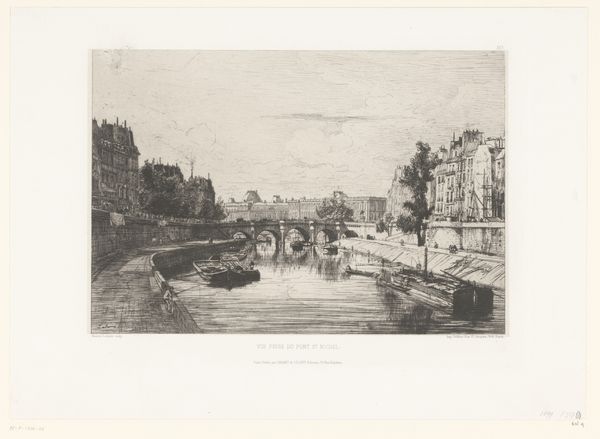
Albert, Railway, and Victoria Bridges, plate six from the Clyde Set 1889
0:00
0:00
print, etching, intaglio, paper
#
16_19th-century
# print
#
etching
#
intaglio
#
landscape
#
paper
#
cityscape
Dimensions: 173 × 261 mm (image/plate); 219 × 315 mm (sheet)
Copyright: Public Domain
Curator: What a beautifully somber scene. D.Y. Cameron created this intaglio print, etching "Albert, Railway, and Victoria Bridges, plate six from the Clyde Set," around 1889. Look at the industrial atmosphere evoked. Editor: There’s something hauntingly still about it, even with the steam billowing in the background. The reflections on the water create this lovely mirroring effect, almost doubling the city’s weight. It's heavy but beautiful. Curator: Indeed. Cameron masterfully uses line and texture to construct spatial depth. Note the contrast between the solidity of the bridges and the vaporous quality of the smoke. It emphasizes a semiotic tension between industry and nature. Editor: Right! And the composition, anchored by those strong horizontals of the bridges and their reflections, leads your eye straight to the distant skyline. Is it me, or is there something almost dreamlike about the architectural details barely visible there? Curator: Precisely! The blurred background does introduce an element of ethereal, atmospheric perspective. That focus is intentional; the structure itself takes a symbolic place as a signifier. Notice too, the restrained palette and delicate gradations. It invites slow, contemplative viewing, emphasizing that period's embrace of industrial progress and its impact. Editor: But don’t you think that the limited colour palette evokes the city in winter? Those little boats below barely move against a very grey light. Curator: Undoubtedly. The somber tonality establishes an emotional resonance, a melancholy that I think we can see is reinforced by its formal, almost architectural organization. Editor: Well, Cameron certainly made this cityscape memorable and beautiful despite all the grit. The industrial period doesn't come across often as serene, but the print offers quiet reflection and admiration. Curator: It's a superb illustration of how form, materiality, and historical context unite to produce meaningful expression. A remarkable piece.
Comments
No comments
Be the first to comment and join the conversation on the ultimate creative platform.
